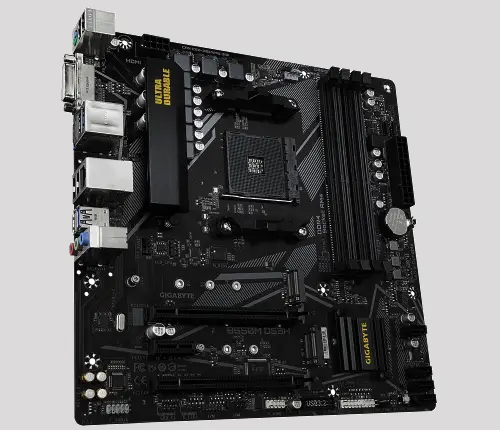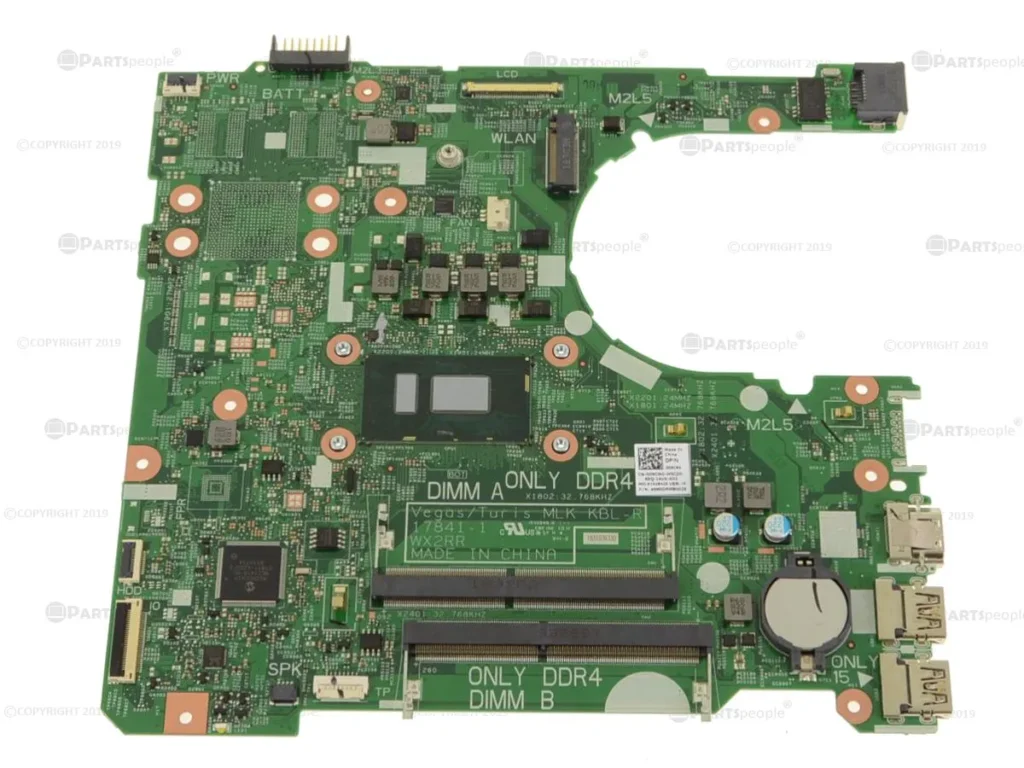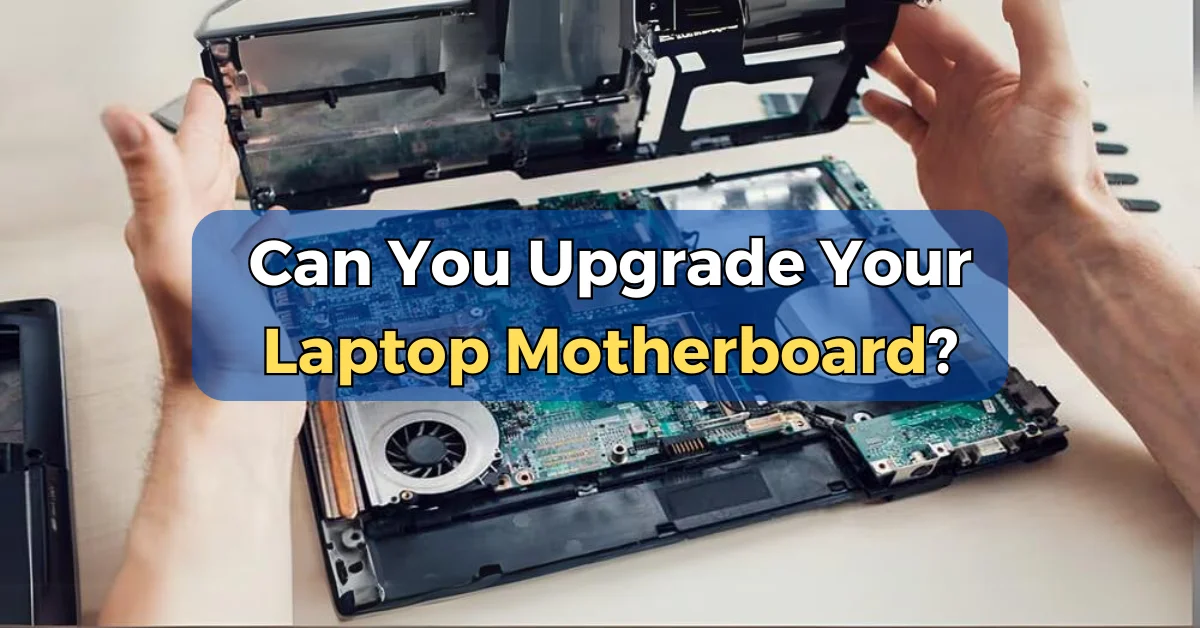No, unfortunately, in most cases, you cannot upgrade your laptop’s motherboard, and even when you can, it is not economically worth doing so.
The main reason you cannot upgrade a laptop motherboard is that laptop motherboards don’t have standard form factors like desktop motherboards. There are many different shapes and sizes of laptop motherboards, with each one being designed to fit a specific laptop model. The second reason is that even if you manage to find a motherboard that fits your laptop, you will probably have to change other components like the CPU, the RAM (sometimes), the GPU, etc. This will make upgrading your laptop motherboard very expensive, so buying a new laptop would probably be a better idea.
If you want to learn more about why you should not upgrade your laptop motherboard, keep reading.
Why Can’t You Upgrade Your Laptop’s Motherboard?

As I quickly mentioned in the intro section, there are a few reasons why you can’t upgrade your laptop’s motherboard, like the lack of standard form factors, the cost, and some other reasons that I am going to discuss more in-depth in this section.
1. The Physical Size Of The Motherboard
If you have been in the PC building space for a while or have been following our blog, you probably know that in desktop computers, there are standard form factors (sizes) in motherboards, making it really easy to upgrade or replace desktop motherboards.
The three most popular form factors are ATX, micro-ATX, and mini-ITX. ATX is the largest form factor (305mm x 244mm), offering more connectivity options and expansion slots. Of course, this doesn’t mean that all ATX motherboards offer the same features. Different models offer different features, but all of them have the same size and screw holes in the same places, so you can easily replace your old ATX motherboard with another ATX model.

Miro-ATX is the second in terms of size (244mm x 244mm). Because it is smaller than the ATX, it offers fewer connectivity options and expansion slots.

The last form factor is the mini-ITX (170mm x 170mm). This one is the smallest of all three and offers the least number of features, and more often than not is used in budget builds.

Of course, there are other form factors like the E-ATX (Extended ATX), but these three are by far the most popular for homebuilders.
And you will be thinking, “Why are you telling us all that?”. I am telling you all that because, in laptops, there is no such thing as form factors. This doesn’t mean you won’t be able to find motherboards with the same dimensions, but it is really difficult even when looking at the same brand or series. To give you a real-life example, let’s take a look at two Dell laptops, the Dell Inspiron 3511 and the Dell Inspiron 3576, both designed for the Intel Core i5. As you can see below, these two models are manufactured by the same company but have totally different motherboard shapes and dimensions.


And you might be wondering, “Why laptops don’t use standard form factors as desktop computers do?”.
While I haven’t talked with laptop manufacturers for a first-hand answer, I believe the main reason is that standard form factors in laptops would hold back manufacturers from making smaller and lighter laptops.
As you know, one of the main characteristics people care about when buying a laptop is its size and weight, so manufacturers always try to make their laptops as small and light as possible.
Imagine if there were standard form factors in laptops. It would be really difficult for manufacturers to innovate fast and create smaller and lighter laptops at the pace they are doing today, leaving their customers unsatisfied.
Related Article: What Is A Good Processor Speed For A Laptop?
2. The Cost Of Upgrading
Let’s say that you do extended research online, and you manage to find a motherboard that fits your laptop. Is it worth it to upgrade your motherboard?
Well, in most cases, I would say that it is not worth it. And this is because its cost would be a bit less than buying a new laptop. But why are laptop motherboards so expensive?
The main reason is that they have most of the vital components soldered on them.
As I mentioned, laptop manufacturers are in a crazy race trying to make their laptops as small and light as possible. A good way of doing this is by soldering as many components as possible on the motherboard.
CPUs and GPUs do not look like they do on desktops when they are soldered on laptop CPUs. They are small chips that take very little space and weight.
The only way to change or upgrade these components is to have the skills to unsolder and solder your own components on them, which is not easy at all. If you don’t know how to do it you will have to take your laptop to a professional, which will increase the cost even more. If you want to know if you can upgrade your GPU or CPU in your laptop, you should read our articles: “Can I Upgrade The Graphics Card In My Laptop?” and “Can I Upgrade My Laptop Processor?“.
3. It Is Really Difficult To Find A Compatible Motherboard
Finding a compatible motherboard for your laptop is a very, and I mean VERY difficult task. Not only because of the cost but also because it is really hard to find the right model.
You see, it is not only about finding the same size motherboard (which is already difficult enough) but also a motherboard that has the same power requirements and the same connector types.
For example, you might be able to find a motherboard of the same size, but what if the GPU socket has different power requirements? Or the RAM type is different?
All these factors make it very difficult to upgrade or replace your motherboard. I know that people say that nothing is impossible, but at the end of the day, you need to ask yourself if it is worth all the hassle or if it is a better idea to buy a new laptop.
Related Article: Can I Use Laptop HDD In Desktop?
FAQs
Can I put any motherboard in any laptop?
No, you cannot put any motherboard in any laptop, and this is what makes upgrading laptop motherboards so difficult. You need to find a motherboard that has the same dimensions as your old motherboard to be able to fit in the casing and that at the same time has the same power requirements and is compatible with all the components your old laptop had.
Can you use a different motherboard on a laptop?
The answer is that it depends. If you manage to find a motherboard with the exact same dimensions, the exact power requirements and is compatible with your old CPU and GPU, then you can. But to be honest, finding a motherboard that meets all those criteria in real life is almost impossible.
How much does it cost to replace a laptop motherboard?
It is difficult to answer this question because there are a lot of factors that affect the cost of replacing a motherboard. The main factor is the price of the motherboard itself. Unlike a desktop motherboard, where you can find a budget-compatible motherboard for around $100, laptop motherboards cost from $150 to over $500.
The second factor is whether you are going to do the replacement part yourself or you are going to pay someone to do it for you. If you are going to do it yourself, there is no extra cost other than buying the right tools if you don’t have them. But if you go to a professional, you should expect to pay something between $150 to $300 extra.
Related Article: “When To Upgrade Motherboard?“
Conclusion
I guess that by now, you can understand why it is not such a good idea to upgrade your laptops motherboard. Finding a motherboard that will fit your laptop and, at the same time, will be compatible with all other components is very difficult.
But even if you are lucky and find a compatible motherboard, the cost will be so high, making buying a new laptop a better idea.
If you have any more questions or if you did a successful upgrade to your entire laptop let me know in the comments section.




